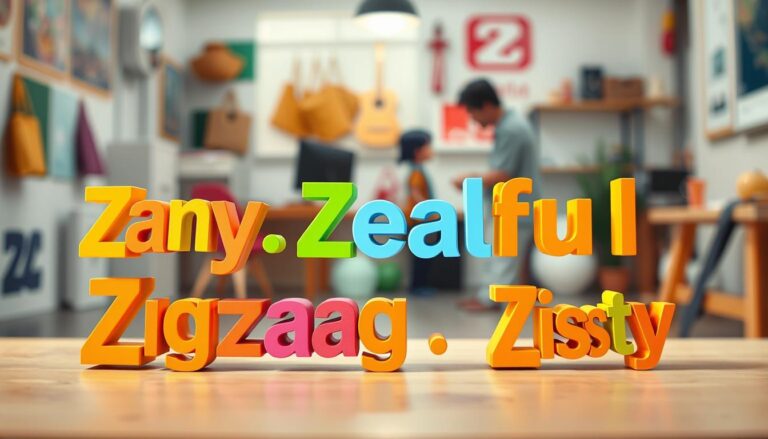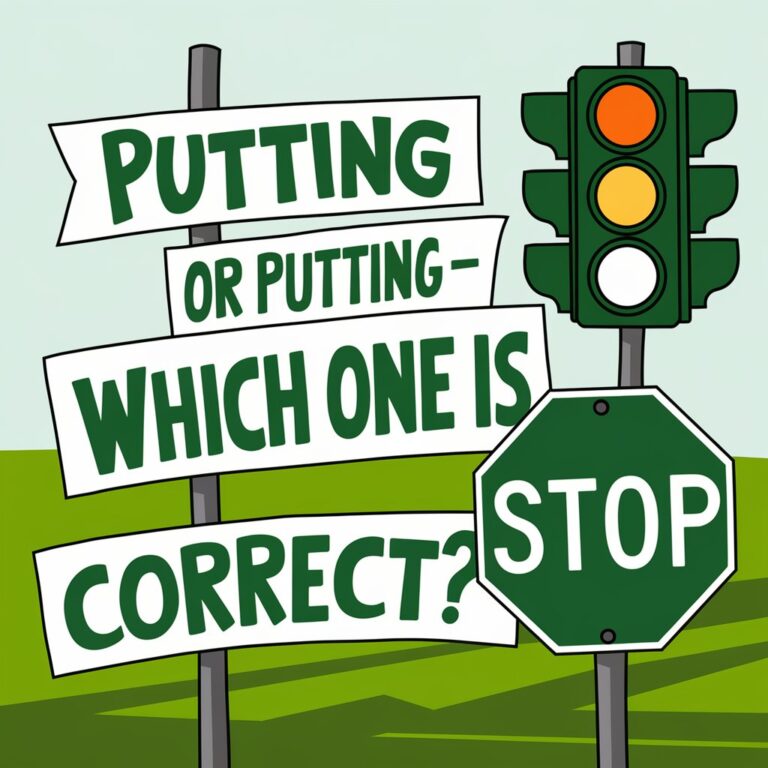What’s the Past Tense of Tear? Is it Tore, Teared or Torn?
What’s the Past Tense of Tear? This question is in everyone’s mind.
On the subject of the beyond stressful of the verb “tear,” many people locate themselves careworn about whether or not it should be “tore,” “teared,” or “torn.” This uncertainty arises because, like many abnormal verbs in English, “tear” doesn’t comply with the standard pattern of including “ed” to shape it beyond disturbing. In this text, we’ll discover the appropriate beyond traumatic styles of “tear” and clarify not unusual misconceptions. Whether or not you’re composing an essay, narrating a story, or just attempting to get your grammar correct, knowing the best utilization of “tore” and “torn” will make you sound more confident and accurate.
What Does the Word “Tear” Mean?
The word “tear” has a few different meanings, depending on how you’re using it. It can be both a verb and a noun, with distinct interpretations. Let’s break it down:
As a Verb (Action Words):
- To Rip or Split Something: When you pull something apart with force, like when you tear a piece of paper or tear open a bag.
- To Cause Injury: You can tear the skin or muscles, which means causing a wound or damage.
- To Remove Something: Sometimes you tear something off, like tearing off a cover or label.
- To Create a Hole: You might tear a hole in fabric or clothing by pulling it apart forcefully.
As a Verb (Expressing Motion or Force):
- To Rip or Shred Naturally: When something comes apart easily, like fabric that tears with little effort.
- To Move Quickly or Recklessly: If you tear down the street in your car, you’re driving fast or carelessly.
- To Penetrate with Force: A bullet can tear through material, meaning it can penetrate it violently.
As a Noun (Describing Damage or Action):
- A Hole or Rupture: A tear in your shirt or jacket happens when it gets ripped.
- A Burst of Energy or Activity: Going on a tear means you’re on a streak of intense activity or success.
- Unexpected Success: If someone’s “on a tear,” they’re experiencing a period of success or progress.
As a Noun (Related to Crying):
- A Drop from the Eyes: When we talk about a tear in this sense, we mean a drop of clear fluid from the eyes. These tears are a natural response to emotions or irritation.
- Crying Itself: Tears also refer to the act of shedding these drops, like when someone cries during a sad movie.
- A Solidified Tear: Sometimes, a tear can even refer to something hardened, like resin, which forms a drop-like shape.
As a Verb (Cry-related):
- To Cry or Shed Tears: When someone’s eyes start to tear up, it means they’re about to cry or their eyes are filling with tears due to strong emotions.
The Verb “Tear” (To Move Noisily)
Aside from its usual meanings, the verb “tear” is also used to mean spreading rapidly and loudly. This application in casual context means running through something with lots of electricity and speed. For instance, when one describes, “He went tearing down the street,” it means a manner they were conveying fast and unsettling. The above tension in this instance is “tore,” so that you would need to say, “She tore through the crowded room, making a whole lot of noise.” This usage is commonly employed in everyday communique to indicate rapid, dynamic movement.
Why is There Confusion?
The paradox of the past worrying of “tear” stems from its diverse uses and connotations in English. While used as a verb, “tear” may be transitive, wherein an object is being separated, or intransitive, in which something is obviously keeping apart. “Tear” is also employed as a noun to refer to either a tear or a drop of liquid from the eyes. These multiple makes use of are what give upward thrust to the ambiguity.
With a majority of these special meanings, it is genuinely smooth to get the past disturbing bureaucracy “tore,” “teared,” and “torn” blended up. it’s all approximately context, that is why human beings regularly get confused in determining which annoying to apply.
⚡ Quick Summary
The choice between "tore," "torn," and "teared" is one among meaning and context. "Tore" is the beyond irritation of "tear" and is used whilst something is pulled or torn, as in "She tore the paper." "Torn" is the beyond participle, often used with auxiliary verbs to indicate completed motion or inside the passive voice, as in "The letter has been torn." A much less frequent "teared," however, is reserved for weeping or crying, as in "She teared up on the sad scene." These variations ought to be regarded as allowing you to use them correctly in speech and writing.
Pronunciation of “Tear,” “Tore,” “Torn,” and “Teared”
The pronunciation of “tear,” “tore,” “torn,” and “teared” differs based on the meaning and usage of each word. Here’s how to pronounce them:
1. Tear (to rip)
- Pronunciation: /tɛər/ (rhymes with “air”) or /ter/ (rhymes with “bear”).
- Example: I accidentally tear the bag every time I carry it.
2. Tore (past tense of tear)
- Pronunciation: /tɔːr/ (rhymes with “more”).
- Example: She tore the letter in frustration after reading it.
3. Torn (past participle of tear)
- Pronunciation: /tɔːrn/ (rhymes with “born”).
- Example: The poster has been torn into pieces.
4. Teared (past tense of tear, related to crying)
- Pronunciation: /tɪərd/ or /teərd/ (rhymes with “aired”).
- Example: He teared up after hearing the sad news.
5. Tear (to pull apart with force)
- Pronunciation: /tɛər/ or /ter/
- Example: Don’t tear the fabric; it’s very delicate.
6. Tore (to destroy by force)
- Pronunciation: /tɔːr/
- Example: The wind tore through the building, causing damage everywhere.
7. Torn (damaged by being ripped)
- Pronunciation: /tɔːrn/
- Example: Her dress was torn during the concert, but she still wore it proudly.
8. Teared (emotionally cried)
- Pronunciation: /tɪərd/ or /teərd/
- Example: The athlete teared up after winning the championship.
9. Tear (to make a hole or opening)
- Pronunciation: /tɛər/ or /ter/
- Example: He accidentally tore a hole in the screen.
10. Tore (quick movement with force)
- Pronunciation: /tɔːr/
- Example: She tore down the hallway to catch the bus before it left.
The Past Tense of “Tear”
The past tense of the verb “tear” can be a bit confusing because it has multiple forms depending on the context. Here’s a breakdown:
1. Tore
- Pronunciation: /tɔːr/ (rhymes with “more”).
- Usage: This is the simple past tense of “tear” when referring to ripping, pulling apart, or damaging something.
- Example: She tore the paper in half.
2. Torn
- Pronunciation: /tɔːrn/ (rhymes with “born”).
- Usage: This is the past participle form of “tear,” used with auxiliary verbs (like “has,” “have,” or “had”) to indicate a completed action or in passive voice.
- Example: The letter has been torn into pieces.
3. Teared
- Pronunciation: /tɪərd/ or /teərd/ (rhymes with “aired”).
- Usage: This is a less common form of the past tense, used specifically when referring to crying or shedding tears.
- Example: She teared up when she heard the sad news.
In Summary:
- Tore is used for ripping or pulling apart.
- Torn is used as the past participle for completed actions.
- Teared is used for crying or emotional tears.
Understanding when to use each form helps ensure you’re using the right one depending on whether you’re referring to ripping something, emotional crying, or a completed action.
A Simple Table Showing the Present, Past, and Future Tense of the Verb “Tear”
| Tense | Example Sentence | Description |
| Present | I tear the paper. / I tear up when I watch sad movies. | Action happening right now. |
| Present Continuous | I am tearing the paper. / I am tearing up. | Action happening right now and continuing. |
| Present Perfect | I have torn the paper. / I have teared up several times. | Action completed recently with relevance to now. |
| Present Perfect Continuous | I have been tearing the paper. / I have been tearing up. | Action started in the past and continuing to now. |
| Past | I tore the paper. / I teared up during the movie. | Action completed in the past. |
| Past Continuous | I was tearing the paper. / I was tearing up. | Action ongoing in the past. |
| Past Perfect | I had torn the paper before you arrived. / I had teared up before you called. | Action completed before another past action. |
| Past Perfect Continuous | I had been tearing the paper when you called. / I had been tearing up during the speech. | Action ongoing until another past action. |
| Future | I will tear the paper. / I will tear up if this happens again. | Action to be completed in the future. |
| Future Continuous | I will be tearing the paper. / I will be tearing up. | Action ongoing in the future. |
| Future Perfect | I will have torn the paper by tomorrow. / I will have teared up by then. | Action completed before a future reference point. |
| Future Perfect Continuous | I will have been tearing the paper for hours by the time you arrive. / I will have been tearing up during the whole event. | Action ongoing until a future reference point. |
| Conditional | If I tear the paper, it will be messy. / If I tear up, I will need a tissue. | Action that might happen under certain conditions. |
| Conditional Continuous | If I were tearing the paper, I would need more time. / If I were tearing up, I would have to leave the room. | Ongoing action that could happen under certain conditions. |
| Conditional Perfect | If I had torn the paper, I would have thrown it away. / If I had teared up earlier, I would have apologized. | Action that could have happened in the past under certain conditions. |
| Conditional Perfect Continuous | If I had been tearing the paper, it would have been all over the floor. / If I had been tearing up during the meeting, it would have been embarrassing. | Ongoing action that could have happened in the past under certain conditions. |
Examples of “Tear,” “Tore,” “Torn,” and “Teared”
in Sentences
force can fracture the glass if you’re not gentle.
Cleave: She tries to cleave the wood along the grain with precision.
Rend: The loud sound of the fabric rend in two as it was pulled apart.
Rupture: The pressure might rupture the pipe if it’s not monitored carefully.
Rip: She often rips through the paper when she’s rushing to finish.
Split: He carefully tries to split the fabric along the seam without damaging it.
Sear: The hot metal can sear the fabric if it comes into contact.
Tatter: The storm began to tatter the flag as the winds grew stronger.
Cleave: She cleaves the paper along the dotted line with a steady hand.
Fray: The edges of the fabric begin to fray when exposed to constant rubbing.
Rent: The strong tension between them seems to rent their friendship apartTear (The Present Tense)
Slash: He tends to slash through the cardboard quickly when unpacking.
Fracture: The sudden .
Synonyms for “Tore” (Simple Past Tense)
Slashed: He slashed the painting in anger, ruining the masterpiece.
Fractured: The stone fractured into sharp shards when it hit the ground.
Rended: The sudden explosion rended the silence of the night.
Cleaved: The axe cleaved the log in half with a single strike.
Ruptured: The pipe ruptured under the pressure, flooding the basement.
Ripped: She ripped the envelope open with impatience.
Broke: The loud crack signaled that the branch had broken off.
Sliced: He sliced the letter open carefully, avoiding any damage.
Cleft: The earthquake cleft the ground, creating a deep crack.
Shattered: The window shattered when the rock hit it.
Wrenched: She wrenched the door open with all her strength.
Tattered: The old flag was tattered from years of exposure to the elements.
Synonyms for “Torn” (Past Participle)
Cracked: The mirror had been cracked from the impact.
Sliced: The paper had been sliced with a knife.
Busted: The fabric had been busted at the seams from overuse.
Broken: The chain had been broken during the struggle.
Disrupted: The peace had been disrupted after the argument.
Fractured: The stone had been fractured by the heavy weight.
Wrecked: The old shirt had been wrecked after several washes.
Tattered: The flag had been tattered by the fierce winds.
Hacked: The document had been hacked to pieces by the intruder.
Cleaved: The wood had been cleaved in two by the axe.
Riven: The earth had been riven by the powerful quake.
Mangled: The car had been mangled in the collision.
Synonyms for “Teared” (Past Tense for Crying)
Cried: She cried when she heard the sad news.
Wept: He wept for hours after the loss of his friend.
Sobbed: She sobbed uncontrollably during the emotional scene.
Bawled: He bawled like a baby during the heartbreaking moment.
Shed tears: She shed tears of joy at the wedding.
Lamented: He lamented his missed opportunity with a heavy heart.
Sniffled: She sniffled through the sad movie scene.
Wailed: The child wailed for her mother.
Blubbered: He blubbered through the entire conversation.
Mourned: She mourned the loss of her childhood pet.
Choked up: He got choked up during the emotional speech.
Sniveled: She sniveled quietly in the corner after the argument.
Origins of the Word “Tear”
The phrase “tear” has charming origins that reflect its evolution in each meaning and utilization over centuries.
The Noun “Tear” (The Fluid Drop from the Eye)
The noun “tear,” regarding the drop of fluid that bureaucracy in the attention, has an extended and wealthy record. It originates from the middle English phrase ter or tere, which developed from the old English tear or teor. These early styles of the phrase were used to explain not only tears from the eyes however also drops of liquids, like nectar. The roots of the phrase can be traced even further again to Proto-Germanic phrases along with tahr- and tagr-, influencing comparable phrases throughout different Germanic languages, which includes antique Norse tár and vintage high German zahar. This linguistic lineage reaches all of the way to the Proto-Indo-ecu root dakru-, which is also the premise for words in Latin (lacrima), Greek (dakryma), and Celtic languages like Irish (der) and Welsh (deigr).
Tears had been associated with human emotion for hundreds of years, and their figurative use started out as early as the 14th century. phrases like “to be in tears” or “to weep” became common within the 1500s, emphasizing the deep emotional responses tears bring. Further to representing unhappiness, tears have additionally symbolized profound feelings like compassion, as seen in the word “tears of blood,” which appeared around 1300. Through the years, tears have remained a long lasting symbol of both grief and empathy, shaping our language and our emotional expression.
The Verb “Tear” (To Rend or Pull Apart by Force)
The verb “tear”, meaning to rend or pull aside by means of pressure, has deep roots within the history of the English language. It originates from the vintage English phrase teran, because of this to tear, rip, or spoil. This time period comes from Proto-Germanic teran, which in addition meant to cut up or ruin aside. The verb “tear” strains even in addition lower back to the Proto-Indo-european root dher- or dherh-, which is supposed to split or divide. Through the years, this word developed across various Germanic languages, performing as teran in old high German and tēran in antique Norse.
The verb “tear” has continually conveyed the bodily act of pulling something apart, normally with pressure or violence. In its most simple experience, it’s far used to explain the act of rending material, paper, or different substances by using physical pressure. This could include anything from tearing a chunk of paper to more severe varieties of destruction, which includes tearing down walls or breaking things apart in anger. The feel of forceful destruction is present in the wide range of contexts wherein “tear” is used.
Over the years, “tear” has also taken on figurative meanings, suggesting the emotional or social “tearing” of relationships or studies. While the physical action of tearing remains relevant, the phrase’s use in emotional contexts—like a torn coronary heart or a torn relationship has made it an effective image of loss, division, and separation.
The Verb “Tear” (To Weep or Cry)
In late old English, teren was used to mean “to shed tears,” the act of weeping. This evolved into the modern “teared,” particularly in American English, to denote something as “full of tears.” The former form, tæherian or tearian, “to weep” later fell out of use sometime in the evolution into center English.
The Noun “Tear” (A Tearing or Laceration)
The word “tear“, referring to a tearing or laceration, is a bodily smash or rupture, often caused by forceful separation. From the old English ter or tear, it has been used for centuries to refer to rips in materials such as material or skin. In medical terms, it can refer to accidents like muscle or pores and skin tears, where tissue is torn or fractured. This sense of “tear” is also metaphorically extended to emotional divisions, representing a ruin in something intact.
The Verb “Tear” (To Move Noisily)
The term “tear” to move noisily is used to describe short, intermittently disturbing movement, generally with awe-inspiring speed or power. The term comes from the concept of something being moved so suddenly or carelessly that it makes a loud sound. For example, one might say a person “tore down the street” to indicate fast, noisy movement, as well as jogging or cycling. The movement is usually characterized by a sense of urgency or commotion, like “tearing thru the room” or “tearing across the field,” where the movement is both rapid and disturbing. This sense of “tear” has been employed in English since the sixteenth century, broadening the meaning of the phrase beyond actual tears to describe any boisterous, hurried movement.
conclusion
In conclusion, the verb “tear” showcases a fascinating evolution in the English language, with various meanings that capture both physical and emotional actions. From its origins in Old English, where it referred to actions such as ripping or tearing materials, the word has broadened to include expressions related to emotional states (shedding tears) and even noisy, forceful movement. Each of these meanings conveys a sense of intensity and disruption, whether describing a violent action like tearing fabric, an emotional release like crying, or a fast, chaotic movement.
The versatility of “tear” makes it a unique word in the English language, able to describe both internal emotional processes and external, physical actions. Its ability to be used in multiple contexts, such as medical terminology (like a muscle tear), emotional expression (such as “tearing up”), and in everyday situations involving movement (“tearing down the street”), highlights the word’s adaptability. Additionally, its figurative meanings, like “tearing apart a relationship,” show how language evolves to encompass not just the physical world but also complex emotional and social experiences.
If you want to explore whole site : Click Here
FAQS : What’s the Past Tense of Tear? Is it Tore, Teared or Torn?
Why do people get confused about the tear past tense?
People get confused about the “tear past tense” because “tear” is an irregular verb, meaning it doesn’t follow the standard rule of adding “-ed” to form the past tense. The past tense of “tear” can be either “tore” or “torn,” depending on how it’s used:
“Tore” is the simple past tense, used when referring to an action that happened and was completed in the past (e.g., She tore the paper.).
“Torn” is the past participle, used with auxiliary verbs like “has,” “have,” or “had” (e.g., The paper has been torn.).
This distinction can confuse people, especially because “torn” looks like it could be the past tense, but it’s actually the past participle. Additionally, some might mistakenly think “teared” is the correct past tense, but “teared” is not used in standard English.
What is the correct past tense of tear?
The correct past tense of “tear” is “tore.” For example, She tore the paper in half.
The word “torn” is the past participle of “tear,” and it is used with auxiliary verbs like “has,” “have,” or “had.” For example, The paper has been torn.
How do you correctly use the past participle of tear in perfect tenses?
To correctly use the past participle of “tear” in perfect tenses, you need to combine “torn” (the past participle of “tear”) with the appropriate auxiliary verb (have, has, or had). Here’s how it works:
Present Perfect:
Structure: Subject + has/have + past participle of “tear” (torn)
Example: She has torn the paper.
Past Perfect:
Structure: Subject + had + past participle of “tear” (torn)
Example: They had torn the fabric before they realized it was valuable.
Future Perfect:
Structure: Subject + will have + past participle of “tear” (torn)
Example: By tomorrow, I will have torn all the pages from the book.
In all cases, “torn” is used with the auxiliary verbs “have,” “has,” or “had” to indicate an action that was completed at some point before the present, in the past, or will be completed in the future.
Can you explain the difference between the tear past tense and past participle?
Certainly! Here’s the explanation of the difference between the tear past tense and past participle:
Past Tense (Tore):
The past tense form of “tear” is “tore.” It is used to describe an action that was completed in the past.
Example: She tore the paper yesterday.
Past Participle (Torn):
The past participle of “tear” is “torn.” It is used with auxiliary verbs (like have, has, or had) to form perfect tenses, indicating an action that has been completed at some point in time (either in the past, present, or future).
Example: The paper has been torn into pieces.
Key Differences:
“Tore” is used for simple past actions (something that happened and finished in the past).
“Torn” is used with auxiliary verbs to show completed actions in the present, past, or future.
In short, “tore” refers to an action done in the past, while “torn” describes a state or completed action, often linked with a form of “have” or “had.”
How do you use the past form of tear in a sentence?
To use the past form of tear (“tore”) in a sentence, you simply describe an action that happened in the past. Here’s a short example:
Example: She tore the letter into pieces.
The past form of tear (“tore”) is used to indicate that the action of tearing occurred and was completed in the past.
What is the past tense of tear apart?
The past tense of “tear apart” is “tore apart.”
For example:
She tore apart the letter when she was angry.
Here, “tore apart” indicates that the action of tearing something apart happened and was completed in the past.
what is the past tense of tear?
The past tense of “tear” is “tore.”
Example: He tore the paper in half.
Is the past tense of tear different from the past tense of tear off?
Yes, the past tense of tear is “tore,” while the past tense of “tear off” is also “tore off.” Both are used to describe actions that happened in the past but involve different contexts.
Example: She tore off the wrapping paper quickly.
What is the past tense of tear used for in grammar?
The past tense of tear (“tore”) is used to describe an action that occurred in the past and is completed. It helps to show an event that has already taken place.
Example: He tore the fabric by accident.
Can “teared” be used as the past tense of tear?
No, “teared” is not a correct past tense form of “tear.” The correct past tense is “tore.”
Example: He tore the paper into pieces, not “teared.”
What is the past tense of tear when used in different contexts like “tear off” or “tear apart”?
The past tense remains “tore” for both “tear off” and “tear apart.” The only difference is in the context of the action.
Example: She tore off the label and tore apart the box.
How can you identify when to use the past tense of tear in a sentence?
The past tense of tear (“tore”) is used when referring to an action that has already happened and is completed in the past. It is typically used to describe physical actions or emotional reactions that took place previously.
Example: She tore through the paperwork last night.















